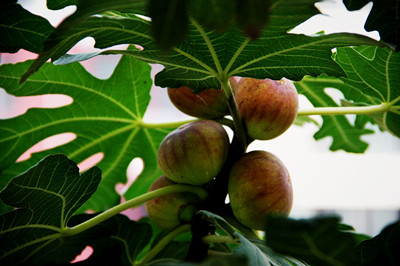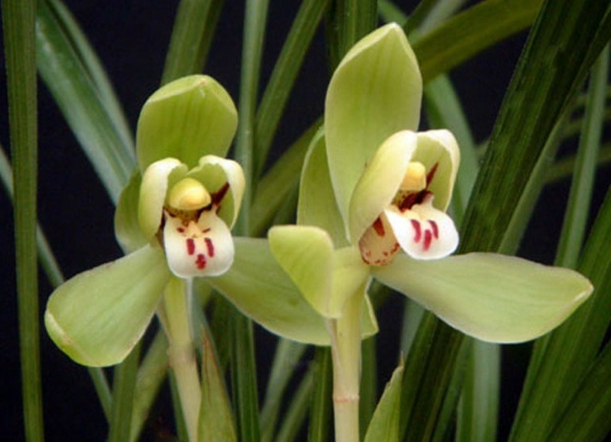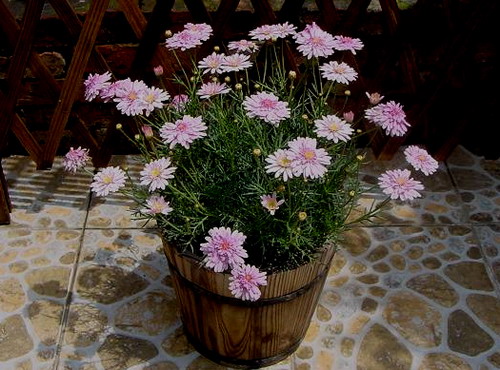Pot cultivation techniques of figs
Figs are native to Europe, the Mediterranean and Central Asia. They were introduced to China in the Western Han Dynasty. Figs have a long history of planting figs in the Tarim Basin, where the figs are sweet and nutritious, and have the laudatory name of "fruit queen". On the other hand, potted figs have elegant branches and leaves and beautiful tree shape. they are beautiful potted plants that can watch leaves and enjoy fruits.
The main points of potted figs
1. Container
Fig root system is more developed, need larger container cultivation,-so often use large tile tank planting, and need a larger space growth environment, open-air balcony, balcony, courtyard and so on are more suitable for its growth.
2. Soil
Figs are not strict with the soil, but if potted, it is best to use fertile and breathable soil. When planting or changing pots, add rotten cake fertilizer, chicken manure and other organic fertilizers rich in carbon, phosphorus and potassium, so that fig branches and leaves can flourish and hang fruit early.
3. Watering
The watering of potted figs can basically be determined according to the progress of their branches and leaves. When the branches and leaves germinate in spring, the amount of water should be less, and the potted soil should maintain a constant humidity. As the branches and leaves grow slowly, the temperature rises gradually, figs also enter the fruit hanging period, at this time to increase the amount of water, sooner or later should be watered, to keep the basin soil moist. If the watering is not timely, it is easy to produce branches and leaves malaise, fruit drop and other phenomena. After entering the autumn fruit ripening period, it is necessary to reduce the amount of water, too much water will cause the fruit to crack. In addition to controlling watering on cloudy and rainy days, we should also pay attention to prevent stagnant water in the basin so as to avoid waterlogging.

4. Pruning
Fig new shoot growth rate is faster, usually should pay attention to pruning and shaping, especially potted figs, too high trunk that affects the beauty, usually maintenance is also more troublesome. So potted figs-be sure to limit the trunk to a certain height and not allow it to grow. The specific approach is to cut off the tip of the head when the trunk of the seedling grows to about 50 centimeters, to promote its germination and branching. According to their own preferences, trimmed into a fixed shape to improve the appreciation value.
5. Overwintering
Figs are not cold-resistant, outdoor conservation of potted figs at the end of autumn Frosts Descent should enter the house in time. Indoor maintenance should be placed in the sunny, well-ventilated balcony living room and other places for maintenance. Figs enter the dormant period in winter and their growth tends to stagnate. At this time, the figs can be flexibly watered according to the indoor temperature. If you have a higher room temperature, you can pour a little more water, but if you put it in a room with a room temperature of about 5 degrees Celsius, you should control the water and keep the basin soil as dry as possible, so that you can survive the winter safely.
How to grow potted figs, the cultivation techniques / light of figs should be sufficient.
Fig is a common plant in people's life, and people are familiar with the efficacy and function of fig, so many people want to grow it at home. So how to plant figs in potted plants, and what should be paid attention to in the cultivation techniques of figs? Next, the editor will take you to learn about it.
How to plant potted figs
If you want to know how to grow potted figs, you must first understand its growth habits. Figs prefer a warm and humid environment and are more resistant to drought, but for cold ones? The weather does not have much resistance, so we need to pay attention to these points. Below, there is a detailed explanation of the cultivation techniques of figs, which can be understood by friends who want to raise figs.
II. Cultivation techniques of figs
1. Soil selection
The choice of soil is an important part of potted figs, and the choice of the right soil will be more conducive to its growth. In the choice of soil, we can choose a mixture of fertile garden soil and humus soil, so that the drainage of the soil will be better, figs can also better absorb nutrients.
two。 Lighting requirement
In the cultivation technology of figs, light is a more important part, figs are more light-loving plants, so we must maintain sufficient light in the process of breeding, so that it will grow better. You can pay attention to this.
3. Watering requirement
In the process of plant growth, water is essential, figs are no exception, generally in spring branches and leaves at the beginning of growth, watering can be relatively less, to keep the soil moist, with the gradual growth of figs, to the fruit period, we need to appropriately increase watering, basically every day need watering, if the number is insufficient will lead to branches and leaves atrophy, fruit fall.
4. Pay attention to pruning
The branches of figs grow faster, so we should pay attention to pruning in the process of growth, because if the branches of figs are too high, it will not only affect its beauty, but also increase the difficulty of maintenance, so pruning is a necessary part. Generally speaking, when the branches of figs grow to about 20cm length, they need to be cut off, which can promote the growth of branches and improve the ornamental quality.
5. Environmental requirements
In the cultivation techniques of figs, the choice of environment is also a top priority, and it is more beneficial for figs to grow in a suitable environment. As mentioned by the editor above, figs like a warm and humid environment, and you can slightly increase the indoor humidity when raising figs indoors, which will be more beneficial to the growth of figs.
6. Pest control
When planting potted figs, if the method is wrong, there are likely to be diseases and insect pests and other phenomena, when this phenomenon occurs, we need timely prevention and control, specific methods you can refer to the fig pest control article, here the editor will not introduce too much.
Planting and cultivation techniques of potted fig trees
Figs are perennial trees with smooth branches, beautiful trees, unique leaves, sweet and delicious fruit and rich nutrition. Potted figs have both ornamental and tasting functions and have their own characteristics. The cultivation techniques are as follows:
1. Potted containers and potted soil
Mud pots, porcelain pots, cement pots, wooden boxes and buckets with good permeability can be used to cultivate figs, but the size should be suitable, with a diameter of 40 cm to 50 cm, not less than 30 cm, and the height can be similar to or slightly larger than the diameter of the basin. The basin soil is required to be loose, rich in organic matter, fertilizer, water and air permeability, and the humus soil under the mountain broad-leaved forest is the best.
two。 Planting method
One-year-old seedlings are planted in a pot after defoliation or before sprouting in spring. Before planting, fill more than half of the basin with nutritious soil to compaction, and the transplanted seedlings should be watered first, and immediately transplant into the basin with soil after water infiltration, with as many roots as possible, and then fill the soil to make the root closely connect with the soil, and the soil surface is flat with the edge of the basin. After watering, the soil surface is 2cm to 3cm away from the edge of the basin. Can also be used in the basin straight insertion method, in early spring sap flow before cutting thick and strong annual branches as cuttings, cut 20 cm branches, straight into the basin. Because fig branches are easy to take root, green wood cuttings with leaves are also easy to survive during the growing period. The strip pressing method is also suitable for the potted plants of figs. The annual or perennial branches of the existing potted figs or figs planted in the field can be pressed into another pot or bucket before germination to the early growth stage, and the striping should be pressed into the basin soil of about 10 cm.
3. Shaping and pruning
The shaping of potted figs can be done in the following two ways. One is the happy pruning method, in which 3 to 4 buds are left at the base of the stem after planting, and three main branches in different directions are selected in the same year. Fig is a light-loving tree species, the main branch angle to open, can be used to pull the main branch to 60 degrees to 70 degrees, the second year on the main branches of the mixed buds can bear fruit. The length of the main branch should be controlled at about 40 cm, and the over-prosperous main branch should be coring in time in summer. The fruiting branches should be weak and strong when pruning in winter. The elongated branches of the three main branches should be retracted and renewed year by year in order to control the crown and make it suitable in size.
The second is the trunk horizontal ring pruning method, which is indefinite in the first year after planting, allowing it to grow naturally. Because of its strong sprouting power, many branches can be germinated from bottom to top in the same year. According to the distribution of branches in winter, about 10 branches are selected and left in a circle according to the distribution of branches. After the branches are extended and grow, they are curved and tied horizontally with thin iron wire to facilitate continuous fruit. Pay attention to the thinning of overdense and overlapping branches, the upward growth of the trunk extension branches should be controlled at 1 meter to 1.2 meters high, and should be coring in time when they are too prosperous. After the third year, the horizontal fruiting branches have formed a whole ring around the trunk from bottom to top, and can be renewed and pruned every year to maintain the fruiting ability, avoid the overlap of circular branches and form a beautiful tree shape.
4. Administration and Management
Potted figs should be controlled to grow to produce mediocre branches, so watering should not be too frequent. Secondly, it is necessary to apply fertilizer reasonably to prevent excessive fertilization and cause fertilizer damage. In general, soaked and fermented bean cake water, horseshoe water or urea diluent are applied every half a month in the general growing season. Nitrogen, phosphorus and potassium compound fertilizer or superphosphate, bone meal and plant ash can be applied in late August in autumn. Figs have few diseases and insect pests, and basically no spraying is needed. The branches before 5 years old are vulnerable to frost damage, so it is necessary to move the pots indoors or cover the branches and stems against cold and overwinter before winter.
- Prev

Breeding methods and matters needing attention of Song Mei (Chunlan Song Mei)
Song Lan is native to central and southern China. Like cool, moist and ventilated, avoid extreme heat, dryness and direct sunlight. The soil is required to be well drained, rich in humus and slightly acidic. The north should be cultivated in a greenhouse in winter with a minimum temperature of not less than 5 degrees Celsius. Song Mei is very easy to grow, but it takes a lot of work to have good flowers.
- Next

Culture methods and points for attention of Marguerite flowers
Margaery Chrysanthemum, Chrysanthemum morifolium, here is the experience of raising Marguerite, sorted out for reference. Soil, Marguerite likes loose, fertile, well-drained soil. Soil: 5 black mountain soil and 5 peat soil. If there is no black mountain soil, you can use garden soil instead. Cuttings
Related
- Fuxing push coffee new agricultural production and marketing class: lack of small-scale processing plants
- Jujube rice field leisure farm deep ploughing Yilan for five years to create a space for organic food and play
- Nongyu Farm-A trial of organic papaya for brave women with advanced technology
- Four points for attention in the prevention and control of diseases and insect pests of edible fungi
- How to add nutrient solution to Edible Fungi
- Is there any good way to control edible fungus mites?
- Open Inoculation Technology of Edible Fungi
- Is there any clever way to use fertilizer for edible fungus in winter?
- What agents are used to kill the pathogens of edible fungi in the mushroom shed?
- Rapid drying of Edible Fungi

